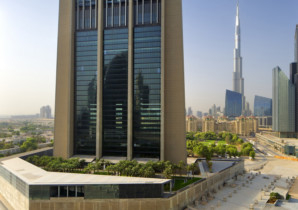
With a total portfolio of $742 million (Dh2.72 billion), Emirates Reit is now the world’s largest listed Sharia-compliant real estate investment trust (Reit) by both total assets and market capitalisation. Sylvain Vieujot, CEO of Emirates Reit, tells PW how investors can invest in Reits and the company’s plans and strategies.
What are Reits?
Real Estate Investment Trusts (Reits) are investment vehicles that offer small and large investors the opportunity to invest in a portfolio of income-generating real estate assets through the acquisition of shares in the Reit. A Reit manager is responsible for professionally administering the property assets and communicating with shareholders. Publicly listed Reits make it possible for retail and institutional investors to get access to the real estate asset class, while benefiting from portfolio diversification and stable returns.
What should the investor know about investing in Emirates Reit?
Emirates Reit shares trade on Nasdaq Dubai. Investors can buy and sell its shares through more than 30 Nasdaq Dubai-registered brokers. Share ownership in a Reit offers flexibility, diversification, liquidity and simplicity compared to owning the physical real estate assets directly. Also, shareholders are relieved from the administrative burden of managing, maintaining and marketing the real estate assets as this is handled by the Reit manager. Moreover, Reits are mandated by law to distribute regular dividends, which provide shareholders with a stable income from their investments.
How are returns calculated and distributed to investors and when?
By law, Emirates Reit is required to distribute a minimum of 80 per cent of its annual net cash income to shareholders. Since its initial public offering, Emirates Reit has distributed dividends to its shareholders twice a year, with a distribution yield averaging 6.25 per cent in 2014–15.
What is the total value of Emirates Reit’s portfolio?
As of September 30, the total portfolio was valued at $742 million, and it generated property income in the first nine months of 2016 of $36.3 million, up from $29.8 million in the same period in 2015. As of September 30, Emirates Reit’s net asset value (NAV) stood at $480.7 million or $1.60 per share.
What sort of properties does Emirates Reit invest in?
Emirates Reit currently owns nine properties. As of September 30, commercial assets contribute 61 per cent of the portfolio income with properties that include Office Park in Dubai Internet City, the Loft Offices in Dubai Media City and the iconic Index Tower in Dubai International Financial Centre. Retail assets contribute 11 per cent of the portfolio income with properties such as Grande Mall, while education assets contribute 28 per cent and include Gems World Academy, Jebel Ali School and British Columbia Canadian School.
What strategy did Emirates Reit adapt as the market softened in 2016?
A softer real estate market is a buyer’s market, and at Emirates Reit we are constantly assessing new opportunities for asset acquisitions. Emirates Reit currently has a dry powder capacity up to Dh800 million, and we hope to benefit from the softer real estate market to grow our portfolio and secure assets that fit our shareholders’ return requirements.
Where did Emirates Reit make significant gains in the last year?
The advantage of owning shares in a Reit is the exposure to a diversified portfolio of assets, which allows for a more stable returns profile than being exposed to a single real estate asset class. For the nine months last year, property income for the portfolio increased by 22 per cent versus the same period in 2015 on the back of occupancy increases and the completion of the new Jebel Ali School campus on time and budget. This translated into a 33 per cent increase in funds from operations (FFO) for the same period.
Why is the education segment an attractive investment zone?
Schools provide a secure cash flow base for dividend distribution as they are fully leased under long-term contracts. This allows the Reit to have a stable income base from a portion of its portfolio, while allowing for income upside from the rest of the portfolio. In addition, demand for K-12 education and campus facilities remains robust in Dubai, and we recognise the long-term strength of the sector and its importance to the overall economy.
Are Emirates Reit’s assets only in Dubai?
While all of Emirates Reit’s properties are currently in Dubai, as they have been best suited to our investment criteria to date, we continue to assess acquisition opportunities in other emirates. Ras Al Khaimah, where Emirates Reit was recently granted a Ruler’s Decree to invest in onshore property, is of particular interest to us given the need for school facilities there and the opportunity to replicate our successful investment model in the education sector.
What projects is Emirates Reit planning to invest in?
We are still interested in schools for the reasons explained earlier, and we are assessing other real estate sectors given our financial capacity. Office buildings that complement our portfolio diversification will always be on our radar as well. We tend not to speculate, but rather look for assets with strong fundamentals that meet our investment targets.












